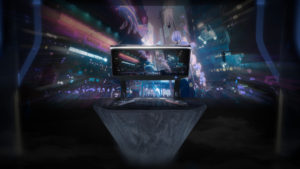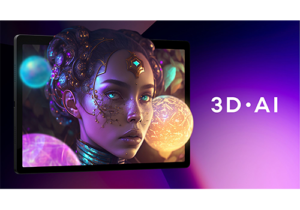What’s New in Immersive Tech (Q1 2023)
One thing we can say for certain, 2023 did not get off to a slow start. The first quarter saw a plethora of new products and technology releases in the immersive space. Here’s a quick rundown of some of the things that got our attention.
Canon continued in the world of immersive imaging with its Free Viewpoint video system. The system combined with Cinema EOS-based 4K cameras, lets a filmmaker create 3D models that can be used to produce various viewpoints of a scene. Canon created a demo with M. Night Shyamalan for the filmmakers most recent film, Knock at the Cabin, in which viewers are able experience an action scene from the viewpoints of four different characters. (More here https://www.hollywoodreporter.com/movies/movie-news/ces-m-night-shyamalan-canon-knock-at-the-cabin-1235291197/)
And the Free Viewpoint system isn’t just for cinema, it’s already been installed in two basketball stadiums with the idea that 3D video can be broadcast live or compiled into replay clips. Another innovation, currently being explored, is using the system to create an immersive experience for fans in the stadium. The Cleveland Cavaliers have a system and they’ve offered a Social Zone where fans were able to insert themselves into the game using Free Viewpoints C-View and a VR headset. That’s right, the fans were transported right to the center of the court in the middle of the game. And when the fans move, the video experience adapts so they feel as if they’re actually on the court. (https://www.nba.com/cavaliers/news/releases-sports-innovation-labs-230106)
 Breylon rolled out its Fusion wrap-around display. The new display is an advance on its earlier product, offering 3-D viewing similar to that of a VR headset but from a desktop monitor. The new Fusion monitor offers a 155-degree view in a vivid OLED display, claiming the world’s largest field of view. Breylon sees it being used in applications like gaming, simulation, and virtual offices, meeting rooms, events, and collaboration spaces.
Breylon rolled out its Fusion wrap-around display. The new display is an advance on its earlier product, offering 3-D viewing similar to that of a VR headset but from a desktop monitor. The new Fusion monitor offers a 155-degree view in a vivid OLED display, claiming the world’s largest field of view. Breylon sees it being used in applications like gaming, simulation, and virtual offices, meeting rooms, events, and collaboration spaces.
 Another company helping us to ditch the headsets, for more natural communications, is Leia with their Lume Pad 2, unveiled at SXSW last month. With Leia’s 3D·AI technology, they’re able to create fully immersive 3D calling, streaming, gaming and content creation/sharing experiences — without eyewear. Along with the tablet itself, Leia has also launched LeiaChat, which, you guessed it, lets you do true-to-life 3D video chats. The Lime Pad 2 also includes built-in stereoscopic cameras (pictures up to 5K resolution), so you don’t necessarily just watch content, you become a 3D creator yourself. And coming in a price point just over $1k, it’s not out of reach for the general consumer that really wants 3D experiences. Check it out on their site https://www.leiainc.com/lume-pad-2
Another company helping us to ditch the headsets, for more natural communications, is Leia with their Lume Pad 2, unveiled at SXSW last month. With Leia’s 3D·AI technology, they’re able to create fully immersive 3D calling, streaming, gaming and content creation/sharing experiences — without eyewear. Along with the tablet itself, Leia has also launched LeiaChat, which, you guessed it, lets you do true-to-life 3D video chats. The Lime Pad 2 also includes built-in stereoscopic cameras (pictures up to 5K resolution), so you don’t necessarily just watch content, you become a 3D creator yourself. And coming in a price point just over $1k, it’s not out of reach for the general consumer that really wants 3D experiences. Check it out on their site https://www.leiainc.com/lume-pad-2
And in the realm of hard science, a research team at University of Science and Technology of China have developed a new way to create dynamic ultrahigh-density 3D holographic projections that pack more details into a 3D image. The new approach, called three-dimensional scattering-assisted dynamic holography (3D-SDH), has been shown to achieve a depth resolution more than three orders of magnitude greater than state-of-the-art methods for multiplane holographic projections.
According to the report on phys.org, the team was “able to project a 3D rocket model with 125 successive image planes at a depth interval of 0.96 mm in a single 1000×1000-pixel hologram, compared to 32 image planes with a depth interval of 3.75 mm using another recently developed approach known as random vector-based computer-generated holography.” (https://phys.org/news/2023-04-technology-advance-paves-realistic-3d.html)
